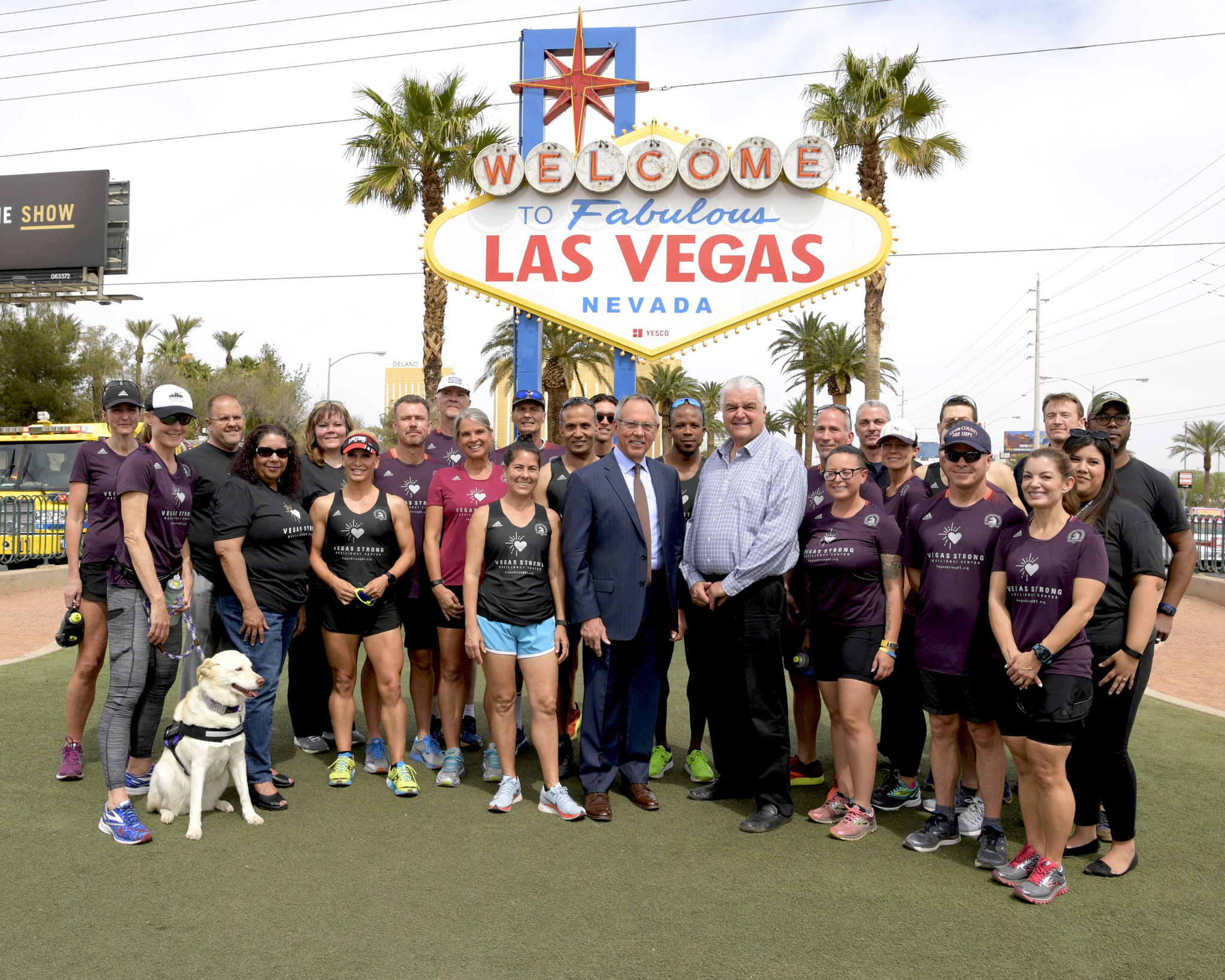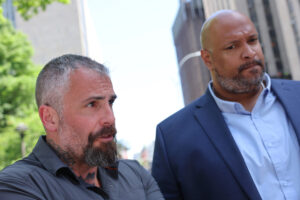5:01
News Story
Crime victims program still reaching out to find Route 91 survivors
It seems like a straightforward enough, albeit lofty goal: Get all the survivors of the mass shooting referred to as 1 October to register with the Nevada Victims of Crime Program, which can cover up to $35,000 in medical, mental health counseling, wage losses and other costs related to being a victim of violent crime.
But the task is proving to be far more difficult than previously imagined. It may set a precedent for how any future tragedies at tourist-focused events are handled.
Attendance at the Route 91 Harvest Festival on Oct. 1, 2017 was estimated at 22,000 — not including all of the people working at the event. All are eligible and encouraged to register with the state’s victims of crime program, even if they don’t currently have bills they want or need assistance with. The program will fund future costs, but only if victims register within one year of the crime.
As of June 13, only 4,674 had registered — 2,160 applicants from California, 1,785 from Nevada, and 87 from Canada.
Rounding out the top 10 most applied from locales are Arizona (82), Washington (67), Colorado (65), Utah (54), Alaska (41), Texas (34) and Oregon (30). The vast majority of the remaining 269 applicants are from the rest of the U.S. Two are from Belgium. One is from Mexico.
Myriad issues contribute to that lower-than-hoped-for number. Some are purely logistical, others rooted in confusion and emotion.
Perhaps the biggest issue: There wasn’t a single source to turn to for victim contact information.
“People think somehow we have a master list, but it’s really the opposite,” says Clark County Assistant Manager Kevin Schiller, who is heading the county’s victim outreach efforts through the survivor and community resource center known as the Vegas Strong Resiliency Center. “We have to get everyone to call us.”
The county approached LiveNation and asked the company to email everyone who’d either purchased a ticket or registered their wristband with them, taking special care to remove emails for the deceased. They did. That yielded 18,723 emails sent. The county has also done outreach to our local hospitals, resorts where victims might have stayed, and taxis and ride-sharing companies to try to get them to spread the word directly to their customers.
To keep track of all these parallel efforts, the county has contracted with a private company to create its own database of everyone in attendance.
The county has also relied on media to help spread the word, which is easy enough locally but tougher nationally. The Vegas shooting was distinct from many other mass shootings in recent history because its victims were primarily from other states and countries. Half of the 58 who died were from California, and it’s believed that at least half of attendees were also. One estimate had only 11 percent of victims being from Nevada.
Schiller says the federal consultant he’s working with has described the level of victim outreach facing Las Vegas as unique and unprecedented. Victim pools were far more concentrated in other mass-shooting tragedies.
To counter this, the county has relied heavily on media attention. The county sponsored a group of survivors who ran this year’s Boston Marathon. They held a kickoff event at the Welcome to Fabulous Las Vegas sign, ominously located a block away from the site of the shooting itself. The effort was one part memorial – a reminder the Vegas tragedy hasn’t been forgotten, even after other mass shootings like the Marjory Stoneman Douglas High School shooting in Parkland, Florida have taken center stage nationally. It was another part publicity event – a way to slide in another reminder there is a resource out there with a looming deadline.
They have instilled help from celebrities like country music performer Eric Church, who tweeted about the resource during the Grammys. Beasley Broadcasting aired public service announcements in various markets where victims are believed to be from.
“We’ve had to be creative,” says Stacey Welling, a county spokesperson.
Later this week, the county expects to announce details about a quilt exhibit inspired by the shooting. Victims from the shooting will be encouraged to enter a raffle to win one of the quilts, which were handmade by a group after the tragedy. Like the Boston Marathon sponsorship, it’s another way to get the word out.
Nobody is quite sure why more folks haven’t signed up for Nevada Victims of Crime Program. One optimistic take is that victims may simply be using separate resources. Six months after the shooting, the Los Angeles Times reported approximately 2,700 people had registered with the California Victims of Crime Program. The Nevada and California programs have worked together since the tragedy, with the latter creating a website specifically for victims of the Vegas shooting. Others may have reached out to other state crime programs directly.
County officials worry it’s because victims feel they don’t need the resource. Some well-meaning people might feel they don’t want to drain resources from victims who need it more. Others may have gotten the state-run program confused with the private Las Vegas Victims Fund, which has doled out millions to people who were physically injured, or other similarly named efforts to help survivors. Still more might have received an email and just dismissed it as spam. Legal Aid of Southern Nevada, which has worked hand-in-hand with the resiliency center since it opened, has warned survivors to be wary of scam artists attempting to capitalize on the shooting.
More simply, many may be just trying to forget, or reject the idea of being labeled a victim.
“Maybe when you think about all that, it’s not really surprising,” says Rebecca Salazar, program manager for the victims of crime program. “Some just want to avoid everything. They don’t want to hear about (the shooting), so they avoid the news. I understand why they do that but they might miss that news about the program.”
Whatever the underlying reasons, county and state officials hope people will overcome them and get people signed up so the resource is available to them if they should ever need it. Outreach messaging to that effect is expected to continue until Oct. 1, 2018.
“A lot of people don’t know how they have been impacted until months or even years later,” adds Welling. “It’s really important to register even if you don’t think you need the help now. In the future you might need it, and this will help pay for your copays.”
The victims of crime program is normally funded through fines and penalty fees, but has also received grants for Route 91 survivors. There is currently no shortage of funds. Program administrators currently project $17 million to be distributed overall.
Adds Salazar, “I do hope people apply.”
For more information, visit the Vegas Strong Resiliency Center at vegasstrongrc.org
Our stories may be republished online or in print under Creative Commons license CC BY-NC-ND 4.0. We ask that you edit only for style or to shorten, provide proper attribution and link to our website. AP and Getty images may not be republished. Please see our republishing guidelines for use of any other photos and graphics.




